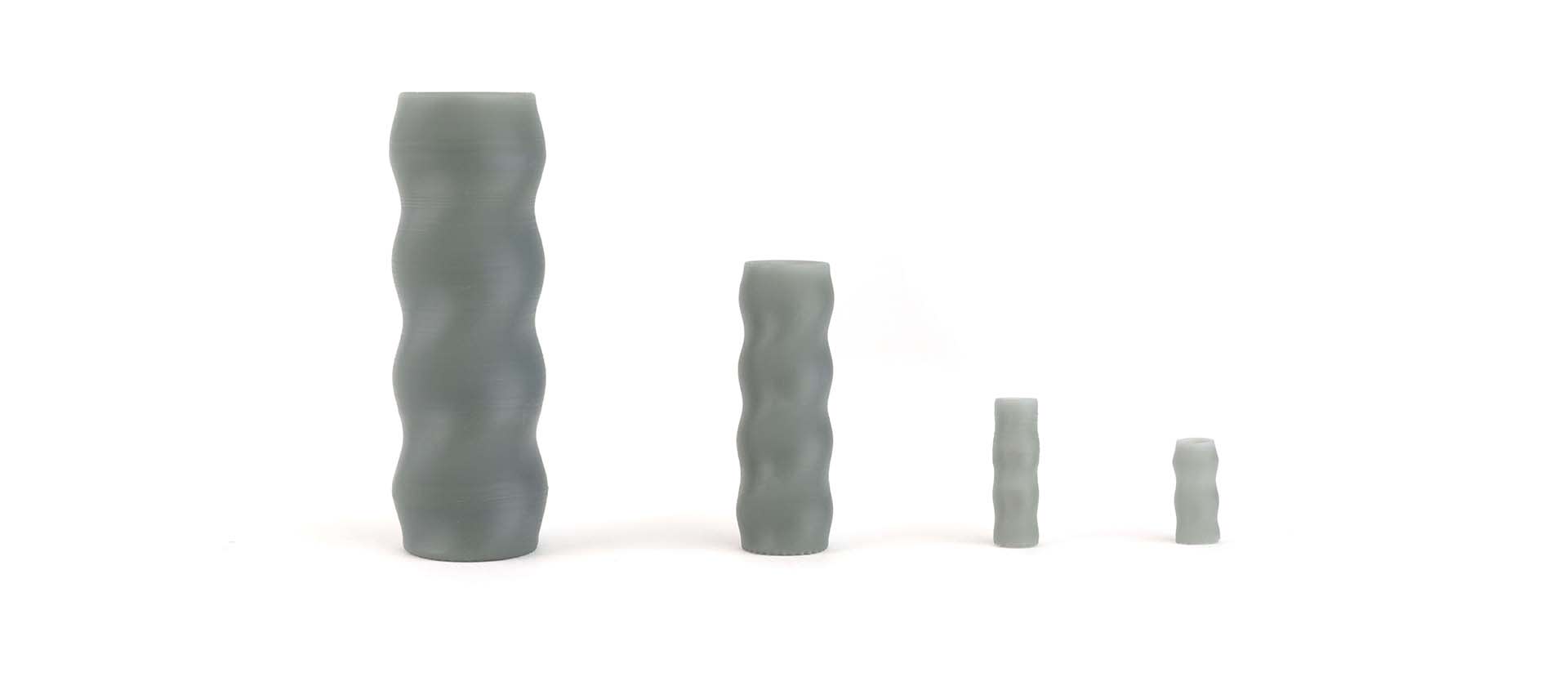In children, bronchomalacia (an abnormal softening of the walls of the airways) is a condition that can cause frequent hospitalizations, and in some cases requires chronic ventilator therapy. Using adult airway stents on children is not feasible because adult stents are too large. Moreover, as children grow over time, they require successively larger stents to meet their physiological needs. An ideal pediatric airway stent solution would enable multiple stents over time to match the growth of the child’s airway, thereby decreasing the need for hospitalizations.
Recently, researchers at the Children’s Minnesota Hospital, exploring potential solutions to this problem, developed an approach to leverage Carbon’s Digital Light Synthesis™ technology and Silicone (SIL) 30 material to create 3D printed airway stents, which will be tested in preclinical studies.
DEVELOPMENT
3D printing is an excellent tool to deliver devices that can meet the diverse and variable sizes required for the pediatric population. Dr. Robroy Maclver’s research group at the Children’s Minnesota Hospital began investigating the creation of airway stents that would be easy to change as the child grows, until they reach adult size and no longer need replacement stents. As the research progressed, the team found that traditional 3D printing methods, all of which use layering technology, quickly failed due to their inability to meet functional specifications associated with the dynamic action of the airways. Stent failures are unacceptable, and therefore researchers needed a robust technology solution that offers improved accuracy and more flexible material.
“Carbon’s SIL 30 material offers an isotropic, smooth finish with the durability to withstand such action in the airway. As a result, we were able to develop a durable, flexible device that can support many different deployment techniques for pediatric stent placement.”
Dr. Robroy MacIverCongenital Heart Surgeon at Children’s Minnesota”
SOLUTION
Carbon’s M Series printers and SIL 30 material met the demanding specifications of this application: small size, fine resolution, smoothness, and the reliable part quality required for small airways (Figure 1). The uniquely designed stent required tight specifications related to low durometer while retaining adequate radial compression strength. Carbon’s 3D Manufacturing solution enabled an iterative design approach that was able to deliver multiple device sizes over time. This resulted in the development of a flexible stent device that also supported different deployment techniques for placing the stent into the airway.

Figure 1: Different sizes of 3D printed airway stents, produced using Carbon M Series printers and SIL 30
BENEFITS
Challenges in addressing pediatric congenital defects of the respiratory system are as unique as the children affected. With Carbon’s technology, each stent can be tailored for thickness, length, and diameter for each child’s airway. Particularly important in pediatric patients is the fact that the stent can be swapped out and replaced with a new stent as the child grows.
CONCLUSION
Researchers have developed a new airway stent for preclinical testing, enabled by Carbon’s M Series printers and SIL 30 material. Carbon’s technology opens up possibilities for bespoke devices that combine robust material properties and adaptable design.
If you have medical applications that can benefit from Carbon’s ability to 3D manufacture products leveraging our broad portfolio of biocompatible materials, please reach out to us at sales@carbon3d.com.
Note: Use of Carbon printers and materials for medical device applications are subject to the Terms and Conditions outlined in the Subscription Agreement, including the Restrictions on Use section. Carbon’s SIL 30 material has been tested for biocompatibility in accordance with ISO 10993-5 and ISO 10993-10. Further testing will be required to support advancement from preclinical to clinical studies for an implantable device application.